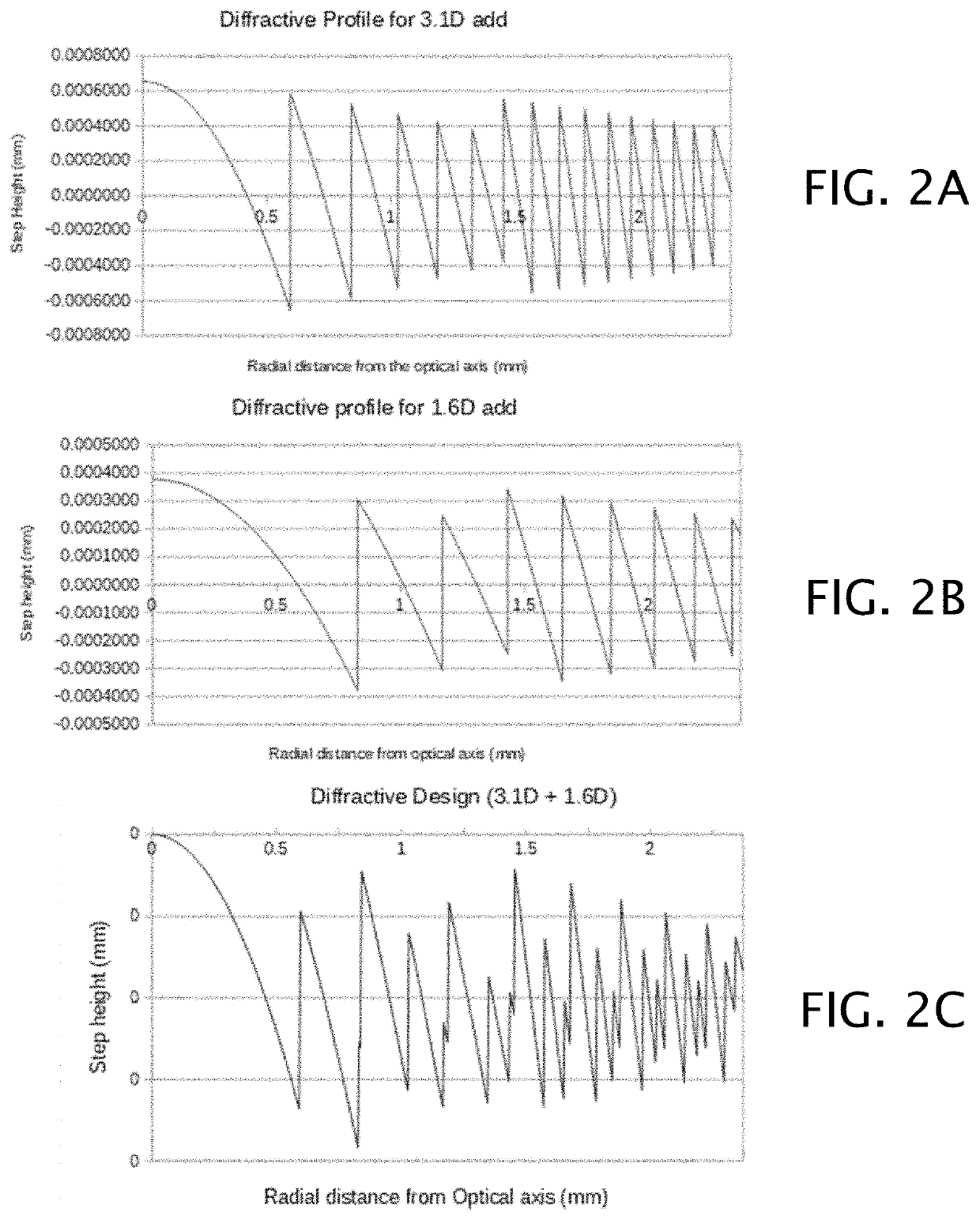Distance dominant intraocular lens
a technology of intraocular lenses and distance, applied in intraocular lenses, instruments, spectales/goggles, etc., can solve the problems of loss of such accommodation for supporting a range of focusing options, and achieve the effects of reducing energy devoted, minimizing unwanted visual effects, and increasing distance energy
- Summary
- Abstract
- Description
- Claims
- Application Information
AI Technical Summary
Benefits of technology
Problems solved by technology
Method used
Image
Examples
Embodiment Construction
[0028]An intraocular lens (IOL) 10 shown in FIG. 1 has a base refractive structure 12 in a generalized form of a lens including a convex anterior surface 14 and a convex posterior surface 16 but is intended to be representative of IOLs of a variety of known forms including refractive structures with various combinations of concave, convex and planar surfaces. In addition, while the anterior and posterior surfaces 14 and 16 appear as spherical surfaces, both surfaces 14 and 16 are preferably aspheric surfaces centered about a common optical axis 18. A diffractive structure 20, which is intended to be constructed in accordance with various embodiments of this disclosure, is superimposed on the anterior surface 14 of the IOL 10 and is incorporated into the shape of the anterior surface 14.
[0029]Both the refractive profile contributed by the base refractive structure 12 and the diffractive profile contributed by the diffractive structure 20 in the anterior surface 14 are axially symmetr...
PUM
 Login to View More
Login to View More Abstract
Description
Claims
Application Information
 Login to View More
Login to View More - R&D
- Intellectual Property
- Life Sciences
- Materials
- Tech Scout
- Unparalleled Data Quality
- Higher Quality Content
- 60% Fewer Hallucinations
Browse by: Latest US Patents, China's latest patents, Technical Efficacy Thesaurus, Application Domain, Technology Topic, Popular Technical Reports.
© 2025 PatSnap. All rights reserved.Legal|Privacy policy|Modern Slavery Act Transparency Statement|Sitemap|About US| Contact US: help@patsnap.com



